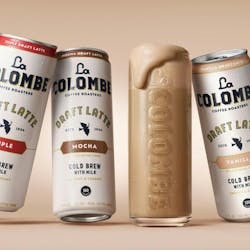In response to "Accelerating Progress in Obesity Prevention: Solving the Weight of the Nation," a report released today by the Institute of Medicine of the National Academies, the American Beverage Association issued the following statement:
"Obesity is a serious public health issue facing our nation, and we all must work together to solve it. We commend the committee for their systematic analysis and for recognizing that physical activity plays an important role in a comprehensive solution. However, advocating discriminatory policies that uniquely focus on sugar-sweetened beverages is the wrong approach. In fact, government data shows that sugar-sweetened beverages account for only 7 percent of the calories in the average American's diet, and have been declining for more than a decade while obesity continued to rise. Focusing on a small and declining source of calories in the diet is a wrong-headed approach that distracts from meaningful solutions that promote healthier diets overall, as well as increased physical activity.Importantly, the beverage industry is doing its part to help consumers make beverage choices that are right for them. We're taking common-sense steps that will have a meaningful and lasting impact, including:
Providing more beverage options than ever before, with a wide array of calories and portion size options;
Innovating new, great-tasting, no- and low-calorie drinks, which have helped to reduce average calories per serving by 23 percent from 1998 to 2010;
Voluntarily agreeing to advertise only water, juice and milk-based drinks on programming targeted to children under 12;
Working with President Clinton on national School Beverage Guidelines that removed full-calorie soft drinks from all K-12 schools and replaced them with more lower-calorie, smaller-portion choices in age-appropriate portion sizes, driving an 88 percent reduction in beverage calories shipped to schools since 2004;
Supporting First Lady Michelle Obama's 'Let's Move!' campaign with its Clear on Calories initiative to display clear calorie information on the front of every bottle, can and pack we produce."
Additional background information on sugar-sweetened beverages includes:
Calories from sugar-sweetened beverages, including soft drinks, juice drinks, flavored waters and other beverages – make up only 7 percent of the calories in the American diet according to a National Cancer Institute analysis of government data submitted to the U.S. Dietary Guidelines Advisory Committee. That means that 93 percent of the calories in the American diet come from other sources. Focusing on a small source of calories rather than the total diet is a misplaced allocation of resources.
Calories in American diet from added sugars from soda is down 39 percent since 2000, per government data. Yet, obesity continued to rise during that period.
Sales of regular soft drinks declined by 12.5 percent from 1999 to 2010. Again, obesity rates continued to rise at the same time.
On taxing sugar-sweetened beverages:
Taxes are not the answer. In fact, a previous IOM report acknowledges that there is limited evidence that tax strategies on food will have an impact on obesity.
Taxing sugar-sweetened beverages will not reduce obesity, nor will it have a truly meaningful impact on obesity-related health conditions such as diabetes, coronary disease or metabolic syndrome.
Importantly, a wide range of factors contribute to these health conditions and singling out one ingredient - or one set of products - in such an overly simplistic manner only undermines efforts to combat these diseases.
A review by George Mason University researchers showed that a 20 percent tax on soda would reduce an obese person's body mass index from 40 to 39.98 - an amount not even measurable on a bathroom scale.
And, West Virginia and Arkansas are two states with an excise tax on soft drinks, yet both states rank among the 10 states with the highest obesity rates in the country, according to the Centers for Disease Control and Prevention.
On Obesity:
The fact remains that obesity is caused by an imbalance between calories consumed from all foods and beverages and those burned through physical activity.
We know the key to living a healthy, balanced and active lifestyle lies in educating Americans about the importance of consuming a variety of foods and beverages in moderation and engaging in regular physical activity.
On Industry's Efforts to be Part of Meaningful Solutions:
America's beverage companies are delivering more choices, smaller portions, fewer calories and clearer labels across the country. By doing so, our companies are making a meaningful difference for families and individuals in our communities - making it easier to choose the drink that's right for them.
More choices:
Through innovation, our companies have broadened their product portfolio, offering beverages in a wide variety of type, portion size and calories. These innovations are evident on store shelves and in vending machines throughout our communities.
The broad choices in beverage type include soft drinks, ready-to-drink teas, water, sports drinks, flavored and enhanced waters, juices, energy drinks and more.
The new choices include an ever-increasing selection of low- and no-calorie beverage choices, as well as mid-calorie beverages. The innovation pipeline continues as our companies remain engaged in developing even more beverage options to fit the ways people live.
Smaller portions:
Delivering a range of portion sizes is another way to help individuals and parents choose beverages that are right for them and their families. Soft drinks and other beverages packaged for individuals are now available in portion sizes ranging from 20-ounce bottles to 7.5-ounce cans, with several options in between.
Through its School Beverage Guidelines, the beverage industry voluntarily reduced juice portion sizes in K-12 schools and capped portion sizes on sports drinks, which are only offered in high schools, to 12 ounces. The range of portion sizes for beverages - including more smaller-portion options – provide for even more choice.
Fewer calories:
Through innovation and initiative, America's beverage companies are cutting calories in stores and in schools across the country.
In the marketplace, the development of more low- and no-calorie beverages has helped drive a 23 percent reduction in the average calories per serving since 1998, according to the Beverage Marketing Corporation, a leading analyst of industry sales data.
In schools, beverage companies cut total beverage calories shipped to schools by 88 percent by delivering on its national School Beverage Guidelines. The companies voluntarily removed full-calorie soft drinks and replaced them with low- and no-calorie options as well as smaller portion sizes. We developed these guidelines with the William J. Clinton Foundation and its Alliance for a Healthier Generation.
Clear calorie labels:
America's beverage companies are delivering on their Clear on Calories commitment to place clear calorie labels on the front of every bottle, can and pack they produce
The beverage industry is placing total calories on the front of all bottles and cans up to and including 20 ounces so consumers know exactly how many calories are in the beverage before making a purchase. For packaging larger than 20 ounces, the labels provide calories per serving.
The calorie labels put this information right at the fingertips of consumers so they can make a choice that's right for them.
The beverage industry announced the Clear on Calories initiative in support of First Lady Michelle Obama's "Let's Move!" campaign.




